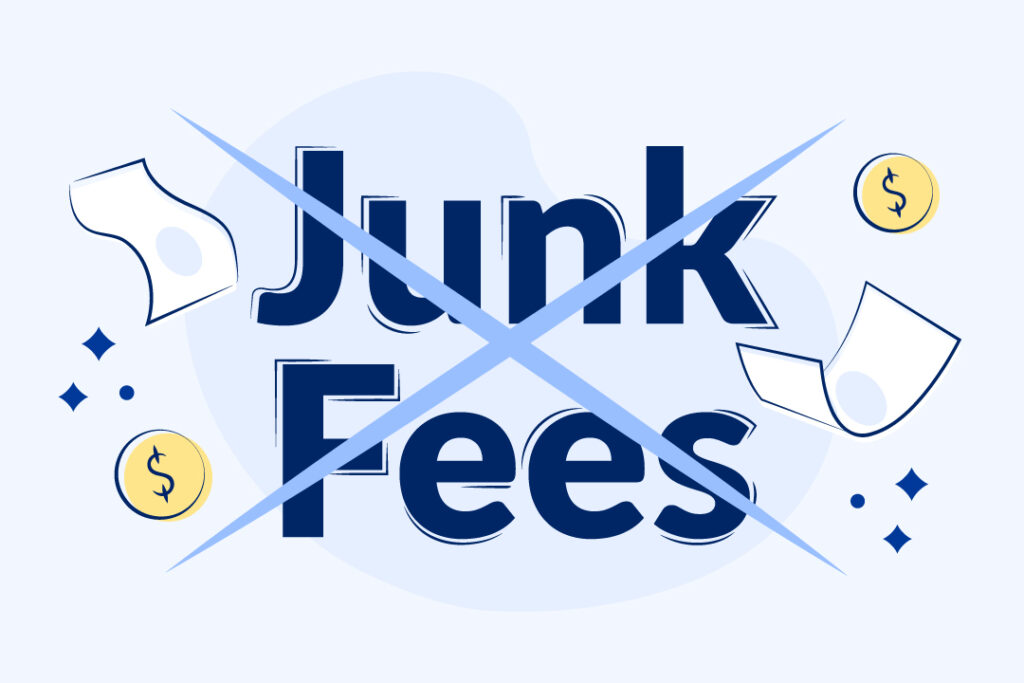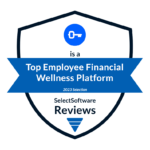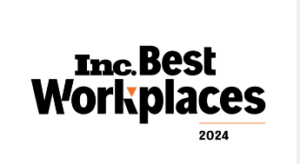|
This article was originally published in HR Daily Advisor on May 10, 2023. Key takeaways
|
Everyone’s talking about junk fees these days. Even the President chose to call them out in his State of the Union Address. One of the worst offenders is the banking industry, which makes money from overdraft, bounced checks, and credit card fees. Junk fees cost your employees money, and eat into their paychecks. But employers have a lot of power when it comes to helping employees avoid these fees, so they can keep more of the money they need to be financially healthy.
Here are three ways employers can protect employees from losing money to banking junk fees:
1. Offer a free, no-surprises bank account
Employees need access to bank accounts that don’t mandate balance requirements, or charge fees for basic banking transactions. Employers can help counteract this by offering their own employees access to a debit account option that is free and easy for employees to use–and completely free of charges like overdraft fees, insufficient funds fees, and bounced check fees.
Don’t add a check-writing feature on the account unless you have a plan to prevent bounced checks. Bounceable checks harm well-intentioned consumers when payees wait too long to cash them, create temptations for abuse, and raise the costs of the program.
If check-writing capabilities are a must for your employees, include an account feature that requires the user to set aside the money for each individual check upfront, so that it cannot bounce due to insufficient funds when it’s cashed. This feature should be much more common than it is — and employers can play a role in increasing its adoption. Without a proactive strategy to prevent bounced checks, employees can unintentionally fall into financial distress.
2. Pre-empt payday loans and overdrafts with fee-free earned wage access
Not all abusive fees are surprises. When employees are desperate for overdraft protection and the lifeline of credit it can provide, they have no choice but to stomach overdraft fees. But employers are in a unique position to help meet employees’ short-term cash needs. Unlike payday lenders, banks, or third-party overdraft apps, employers know how much an employee accrued in pay each week. Giving employees early, fee-free access to the money they’ve earned, without penalty or cost, can have a dramatic impact on preventing acute financial stress.
As an employer, you don’t have to go all the way to a full instant pay solution to be useful to your employees. In fact, there is reason to be cautious about full transition to instant pay. At minimum, you’ll need to make sure that you have solutions in place to mitigate the downside risks of full instant pay, before you change your approach.
If you are skeptical of earned-wage access with high caps on what’s cashed out, can’t make the economics work yet, or aren’t ready to decide or proceed, there are alternatives. For example, you can implement an earned wage access solution with a low cap, like $100 per pay period, to help employees cover many emergencies. One Consumer Financial Protection Bureau study found the median transaction amount that led to overdraft was about $50.
According to the FDIC, a typical fee for such an overdraft is $35—which is effectively a sky-high APR for such a small, short-term loan. And that’s not even counting other fees they might have incurred because of what they couldn’t pay, like credit card late fees. Don’t underestimate the power a timely advance can have on the seven out of 10 employees who paycheck to paycheck.
3. Help employees choose better accounts by making direct deposit switching easy and safe
This one’s obscure so far, but it’s a secret, untapped weapon for employers.
As an employer, you can generally assume that an employee is using the bank their payroll direct deposit directs to as their primary (and possibly, only), bank. Banks have happily relied on this direct deposit switching friction to bind reluctant consumers to them. A captive consumer is a consumer who pays junk fees.
But, there are ways employers can help make direct deposit switching easier and safer. For example:
- The fee-free employee bank account provider can build a hook-up to the employer’s system so that employees can redirect their payroll to this hand-selected account with just one click.
- Employers can partner with a new generation of third-party payroll automation platforms that compete on transparency, and low prices (like Argyle, Pinwheel, and Atomic ). These are not to be confused with the platform you use to pay your employees.
Truly breezy direct deposit switching would make banks quite nervous if it really caught on, particularly at the nation’s largest employers.
You or your debit account vendor can also bake safeguards into the employee’s experience to prevent common pitfalls of account switching, such as warnings about updating billers, and help with the administrative burden of transitioning accounts.
As an employer, you may not be able to save every employee from every junk fee. But as the provider of the paycheck, you are well-positioned to support employee financial health by helping them avoid junk fees that cost them money unnecessarily.
To learn more about how Brightside can help your employees improve their financial health with Financial Care, click here.
Written by Sophie Raseman, Head of Financial Solutions at Brightside





